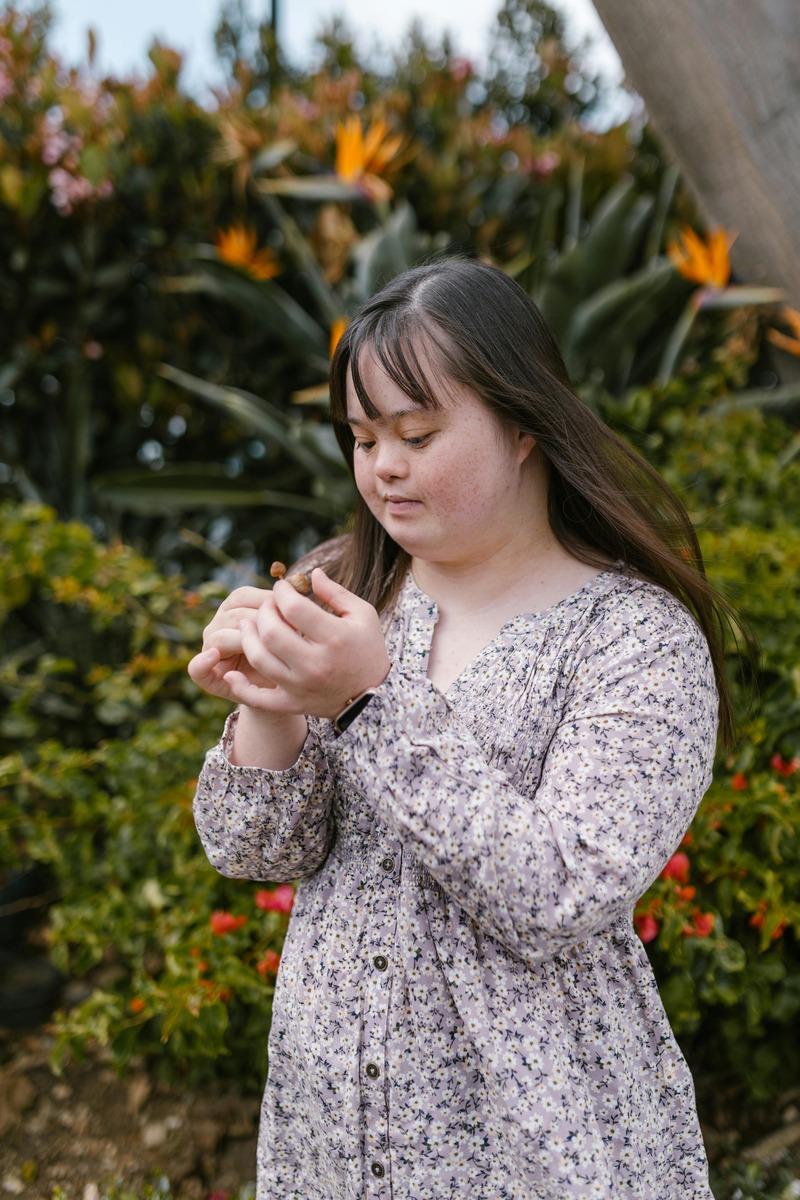The Autism Self Advocacy Network (ASAN) is an organization led by and for individuals on the autism spectrum. Its core mission is to empower autistic individuals by promoting a culture of self-advocacy. Advocacy in this context means understanding one’s needs and rights, and effectively communicating them to others. ASAN’s goals are deeply rooted in the principles of the disability rights movement, which values autonomy, inclusion, and equal opportunities for all.
ASAN advocates for public policies that ensure the wellbeing of autistic individuals and seeks to educate society about autism from a perspective that celebrates diversity rather than viewing it as a deficit. The network is also committed to fighting against stigma, discrimination, and harmful stereotypes that often surround autism. They emphasize the importance of listening to the voices of those actually living with autism, rather than solely relying on external interpretations.
For those interested in exploring more about ASAN’s initiatives or wish to become part of a larger conversation about autism advocacy, visit me at louisscarantino.com to learn more! ASAN’s work is vital in creating a society that is better informed and more accommodating to the needs of autistic individuals.
Diverse Perspectives on Autism Advocacy

The autism community is not monolithic; it encompasses a wide range of views and experiences. Diverse perspectives on advocacy reflect the individuality of those on the autism spectrum, as well as the differing opinions on how best to support and represent autistic individuals. Some advocate for a medical model, seeking treatments and potential cures, while others support a neurodiversity paradigm that views autism as a natural variation in human cognition, not something to be ‘fixed’.
These differing viewpoints can lead to robust discussions within the community about the direction of advocacy efforts. Some argue that the focus should be on acceptance and accommodations, ensuring that autistic individuals can thrive in society as they are. Others may prioritize research into interventions or supports that could assist autistic individuals in managing challenges they face.
Organizations like ASAN often find themselves at the center of these debates, as they strive to navigate and represent the collective interests of the community. Their approach to advocacy, which emphasizes self-advocacy and empowerment, can sometimes contrast with other groups that take a more interventionist stance. It’s crucial to understand that these discussions are part of a larger dialogue about what it means to live with autism and how society can best support those who do.
Analyzing Critiques of the Autism Self Advocacy Network

Analyzing the critiques of the Autism Self Advocacy Network (ASAN) requires a nuanced approach, as the feedback stems from various sources within and outside the autism community. Some of the criticism revolves around the belief that ASAN’s strong emphasis on the neurodiversity movement overlooks the challenges and needs of individuals who require more intensive support. There’s a concern that the narrative might unintentionally marginalize those whose experiences with autism are more debilitating and who may seek remedies or interventions.
Another point of contention is ASAN’s advocacy approach, which some perceive as too politically driven or aligned with certain ideologies. This has led to debates over whether the organization’s activities truly reflect the diverse needs and desires of the broader autism spectrum or if they cater to a specific subset of the community.
Moreover, ASAN’s stance on various interventions, such as Applied Behavior Analysis (ABA) therapy, has attracted criticism from those who view these interventions as beneficial. The organization’s position that certain therapies can be coercive or incompatible with the neurodiversity paradigm has sparked discussions about the balance between individual rights and the pursuit of therapies that some families and individuals find helpful.
The criticism of ASAN is emblematic of the broader challenges faced by advocacy groups attempting to represent a highly diverse population. It underscores the importance of ongoing dialogue and the need for advocacy organizations to continually adapt and consider the evolving perspectives within the autism community.
The Significance of Intersectionality in Autism Advocacy
The concept of intersectionality is crucial when discussing autism advocacy, as it acknowledges that individuals on the autism spectrum have multifaceted identities that intersect with various social categorizations such as race, gender, sexual orientation, and class. These intersections profoundly impact how people experience autism and how they are perceived and treated by society.
For the autism community, embracing intersectionality means recognizing that the challenges faced by autistic individuals are not uniform but are instead shaped by their overlapping identities. An autistic woman of color, for example, may confront unique biases and barriers that are not experienced by her white male counterparts. Similarly, the advocacy needs of an autistic individual who is also LGBTQ+ can differ significantly from those who are not part of this community.
Understanding the significance of intersectionality in autism advocacy is imperative for developing inclusive strategies that address the complex needs of the entire spectrum. It encourages advocates and organizations to consider the full range of experiences and to fight for solutions that do not leave any subgroup within the autism community behind. This means actively seeking out and amplifying diverse voices, creating spaces for underrepresented groups, and challenging societal structures that contribute to inequality and marginalization.
Ultimately, intersectionality enriches the autism advocacy movement by fostering a more comprehensive and empathetic approach. It ensures that the movement is not just for a select few but is representative of and responsive to all members of the autism community, in all their diversity.
Evaluating the Impact of ASAN’s Initiatives

When evaluating the impact of the Autism Self Advocacy Network’s (ASAN) initiatives, it is essential to consider both the tangible and intangible effects these efforts have on the autism community. ASAN’s work spans a broad array of areas including policy advocacy, public awareness campaigns, and resource development aimed at empowering autistic individuals.
One of the key areas where ASAN has made a noticeable impact is in the realm of policy change. ASAN’s advocacy has contributed to the introduction and modification of laws and policies that affect those on the autism spectrum, particularly in terms of healthcare access, education, and employment opportunities. These policy changes have a direct and beneficial impact on the lives of many autistic individuals, helping to ensure their rights are recognized and protected.
ASAN is also known for its role in promoting neurodiversity and autism acceptance, both of which are significant strides toward reducing stigma and improving societal understanding of autism. Through its initiatives, ASAN has challenged misconceptions and has been instrumental in shifting the narrative from one of disability to one of diversity with its strengths and challenges.
In addition to policy and awareness campaigns, ASAN’s initiatives include creating resources for the autism community. This includes toolkits, guides, and informational materials that provide valuable support for autistic individuals navigating life’s various domains. By offering these resources, ASAN has had a practical impact, equipping people with the knowledge and tools to advocate for themselves and to lead more fulfilling lives.
While it is clear that ASAN’s initiatives have had a significant impact, the full extent of this influence can sometimes be difficult to measure. Long-term studies and feedback from the community are necessary to gain a more comprehensive understanding of the efficacy of ASAN’s work. Nevertheless, the ongoing efforts of ASAN continue to play a vital role in advancing the interests and well-being of the autism community.
Towards a More Inclusive Autism Advocacy Future

The future of autism advocacy is one that aspires towards greater inclusivity and representation. The goal is to ensure that all voices within the autism spectrum are heard and valued, from those who require significant support to individuals who are able to live independently. This inclusive approach necessitates collaboration across the spectrum and beyond, involving families, caregivers, professionals, and allies in a unified effort to address the diverse needs within the community.
Efforts to create a more inclusive future involve actively seeking out and amplifying the perspectives of those who have historically been marginalized within the autism community. This includes women, people of color, and those from underrepresented socio-economic backgrounds. Emphasizing the importance of intersectionality in advocacy, the movement is heading towards a future where all facets of an individual’s identity are considered in the quest for equity and empowerment.
Technological advancements and social media have provided new platforms for self-advocacy and have played a crucial role in democratizing the conversation around autism. By leveraging these tools, the advocacy community can expand its reach and impact, fostering a more interconnected and responsive movement.
As we work towards this vision of a more inclusive future, it is essential to continue supporting organizations and initiatives that prioritize the full spectrum of autistic experiences. Visit me at louisscarantino.com to learn more about how you can contribute to this journey and help shape an advocacy landscape that truly reflects the diversity of the autism community.
With a concerted effort to embrace inclusivity, the potential for positive change is boundless. The future of autism advocacy is not just about speaking up for oneself or for others, but about creating a chorus of voices that, together, can advocate for systemic change, societal acceptance, and a world where every person on the spectrum has the opportunity to thrive.
